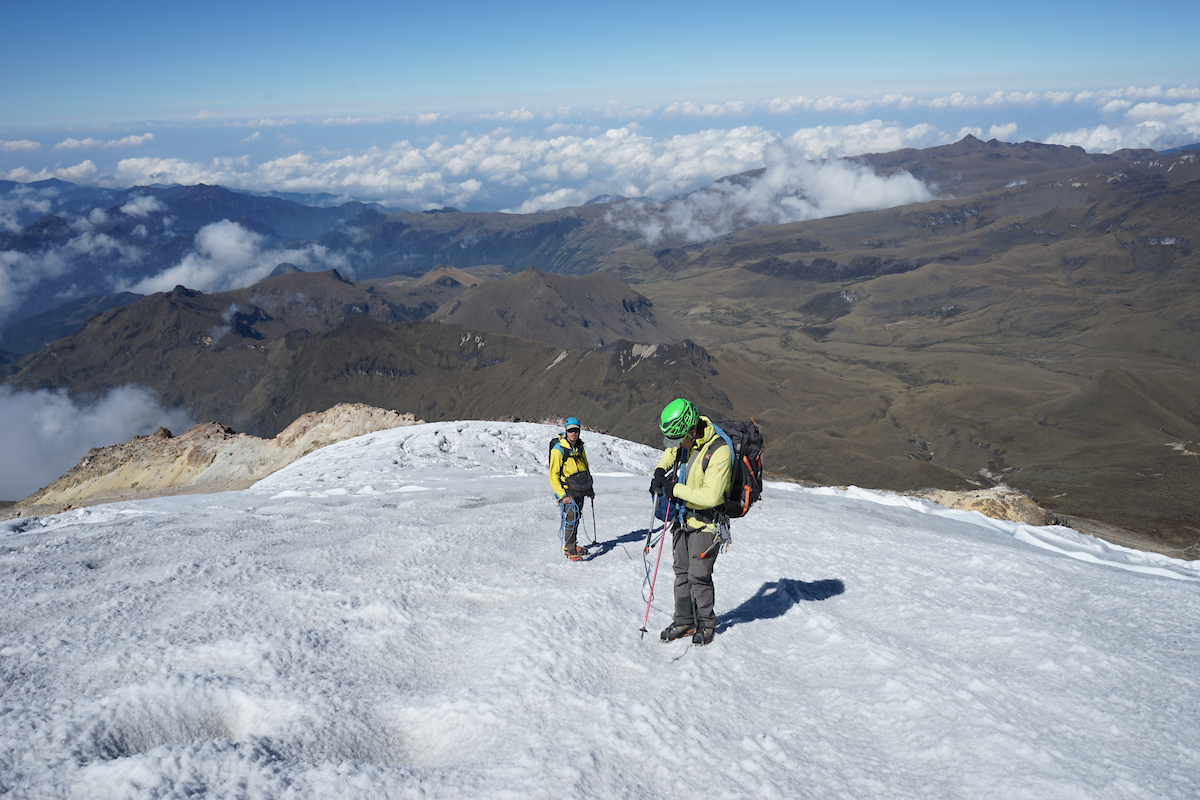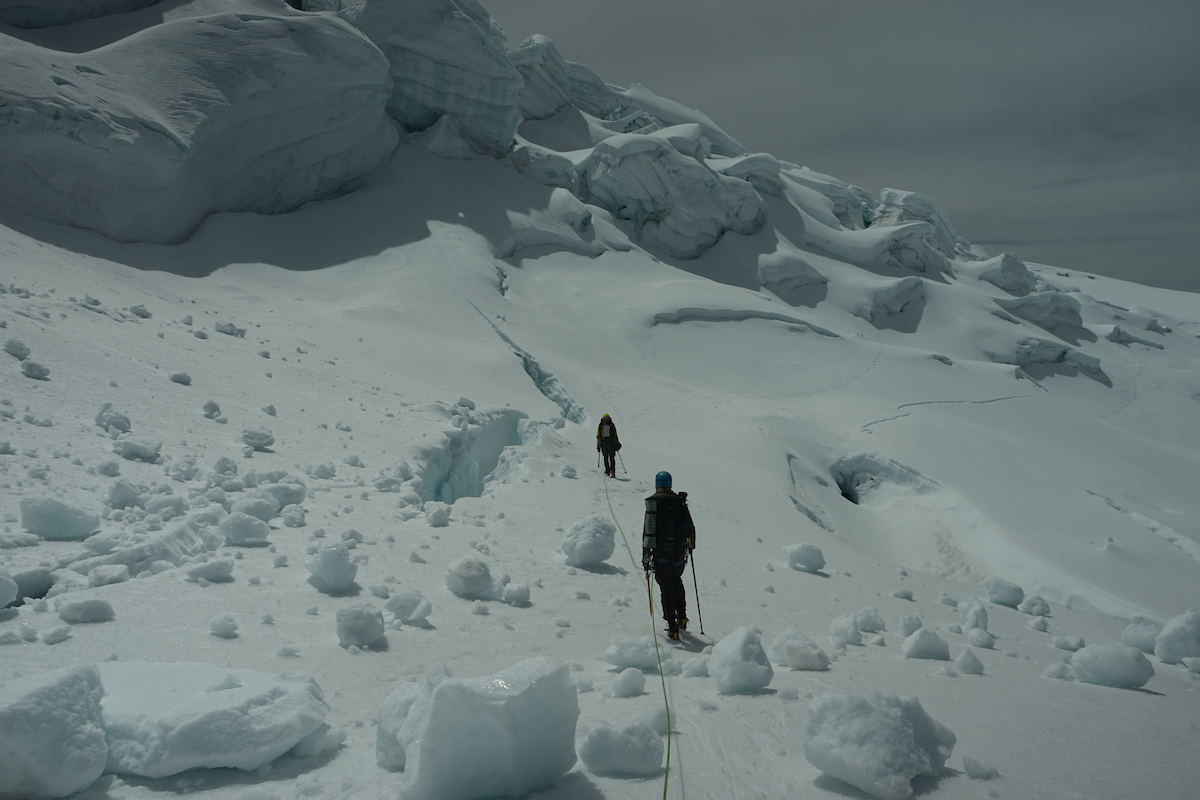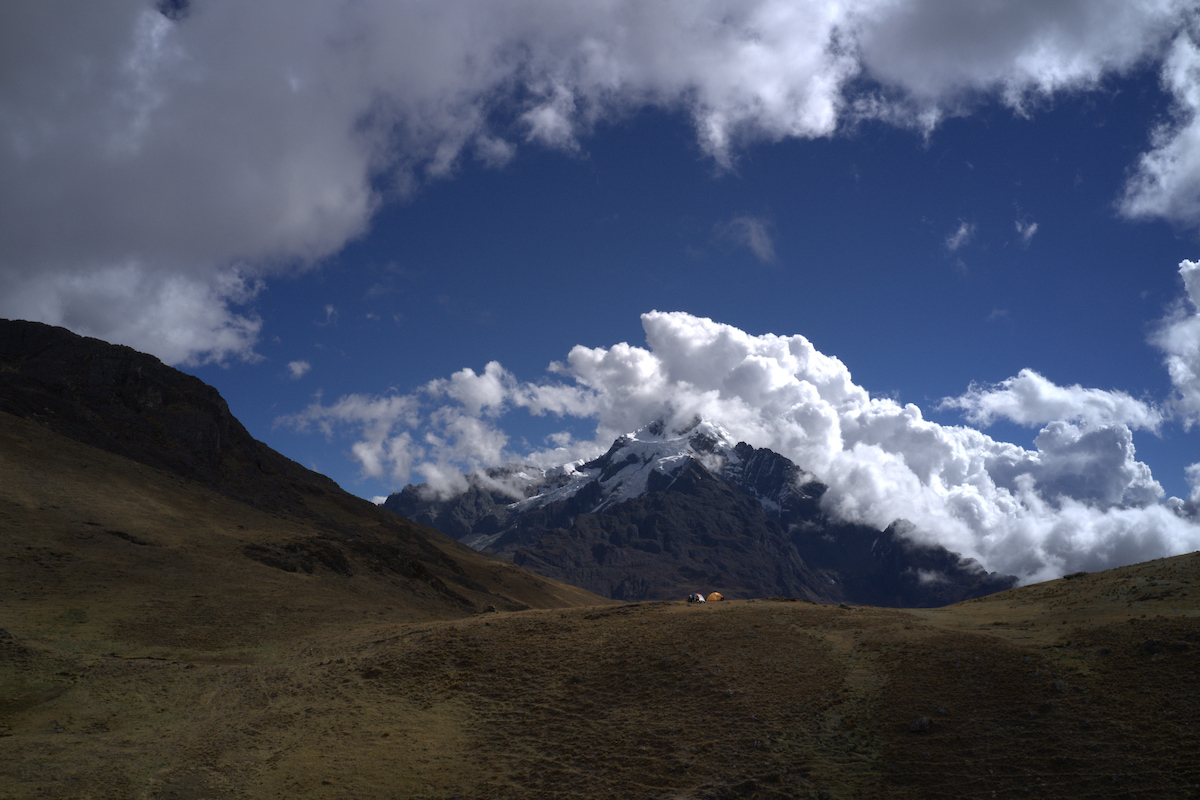If you’re interested in a unique alpine experience, for both trekking and mountaineering, Ecuador is still a well-kept secret. Learn why.
By Owen Clarke
Owen Clarke is a freelance outdoor and travel journalist specializing in mountaineering.
Harboring 10 mountains higher than 5,000 meters (16,400 feet) including the 6,300-meter Chimborazo, all in a country smaller than the U.S. state of Nevada… It’s safe to say that Ecuador is a mountaineering paradise.
Reaching this South American nation takes a mere five hours by plane from Atlanta, and scarcely more than that from the West Coast. So Ecuador is just a hop-and-a-skip away for American climbers, at least compared to trucking all the way down to Patagonia, taking a flight across the pond to Europe, or journeying further afield to higher ranges like the Himalaya or Karakoram.
When mountaineering in Ecuador, however, what’s even more appealing than the large quantity of high-altitude summits and their proximity to the U.S… is the relatively low level of technical difficulty required to climb them.
Despite their high elevation, many of the highest mountains in Ecuador are classified as trekking peaks, requiring few or no technical pitches of rock or ice to summit. As such, our mountaineering Ecuador expeditions allow you to practice your alpine skills in high-altitude terrain without the dangers inherent in larger ranges like the Himalaya or the technical skills required in regions such as the Alps.
Make no mistake though, these rugged Andean volcanoes are more than a worthy goal, and it will require every ounce of your skill, determination, and vigor to reach a summit. When I say these peaks are no joke, I speak from firsthand experience. I nearly died on an Ecuadorian volcano back when I was in college (i.e. young, dumb, and broke), trying to hire a dirt-cheap local guide to accompany me. More recently, an avalanche on Chimborazo last fall killed half-a-dozen. The group that triggered the avalanche was also led by unlicensed guides.
All the more reason to climb with us. Our mountain guides for Ecuador are some of the most experienced and talented in the world. We will ensure you have the skills, gear, and fitness you need to reach the summit (and get back down) safely. The very best mountaineers are the ones who die of old age, right?

Antisana, Cotopaxi & Condor Trek
This new itinerary is an excellent intro course for mountaineers of all stripes. Out of the nearly three-dozen significant volcanic summits in the country, Antisana (18,875 feet) and Cotopaxi (19,347 feet) are without doubt two of the finest, and both are extremely accessible from the capital.
As I wrote before, these peaks are no joke: climbers embarking on these expeditions should arrive with a thirst for knowledge and a healthy desire for enduring mountain conditions. That said, the traditional lodges and haciendas we’ll be staying in are truly outstanding, offering amazing comfort and fine cuisine in-between climbs, making this an amazing “luxury climbing” opportunity.
But you won’t just glean firsthand experience and new skills on glaciated mountains several thousand feet higher than any in the continental U.S. on this expedition. You’ll also experience the breathtaking beauty of the Andean jungle (one of the most bio-diverse ecosystems on the planet) during our “Condor Trek.”
Simply put, this trip showcases the very best of the natural splendor Ecuador has to offer, from the jungle to the mountains and back again.
Learn More About Ecuador Mountaineering Trips

Cayambe & Cotopaxi: Everest Training Expedition
This 10-day expedition takes us from the world’s second-highest capital (Quito, at 9,400 feet) to attempt two of Ecuador’s tallest and most beautiful summits, Cayambe (18,996 feet) and Cotopaxi (19,347 feet). These are the third and second-highest peaks in the country, respectively. Easily accessible glaciers and a direct route to the summit make these peaks spectacular learning environments, and still far higher than any mountain in the continental United States. The view from the summit is nothing short of sublime.
In preparation, we’ll also tackle the 15,700-foot Rucu Pichincha, a worthy summit in its own right, using a technical knife-edge ridge to reach the mountain’s peak.
Even if conditions are unfavorable for Cotopaxi during our trip, we can easily modify this expedition to try other peaks of similar difficulties such as Antisana or the Illinizas (Norte-16,818 feet and Sur-17,208 feet).
Throughout the trip, we’ll be staying in charming haciendas and enjoying the excellent Ecuadorian cuisine. All the while, we’ll be teaching you the skills and techniques you need to experience success on 8,000-meter peaks like Everest.
Learn More About Our Cayambe & Cotopaxi Expedition

Are These Glaciers Going Extinct?
Ecuador is far from the only country where mountains are being affected by climate change, but it is being hit harder than most. One of the unique aspects of Ecuador’s volcanic summits is their equatorial location. Ecuador sits directly on the equator. Many of these peaks are less than a hundred miles from the equatorial line, and it actually runs directly through Cayambe (the peak’s glaciers are the only glaciers in the world that rest on the equator).
Unfortunately, as a result, these mountains are being devastated by climate change. In total, Ecuador’s peaks have lost more than half their glacial coverage since the 1950s.
Cayambe’s glaciers have shrunk 50% in the past 30 years alone, and scientists predict that the mountain’s glaciers will completely disappear in the next 20 years. The same report noted that Cotopaxi’s glacier lost 45% of its mass between 1976 and 2006 and that this glacial melt has only accelerated in recent years.
As glaciers continue to shrink, the experience of climbing these volcanoes will be irrevocably altered. The point is, climbing on an Ecuadorian glacier may soon be an adventure of the past, akin to spotting a dodo bird in the wild.
Our children’s children likely won’t have this opportunity, which is all the more reason to experience the brilliance of these glaciated summits while we can.